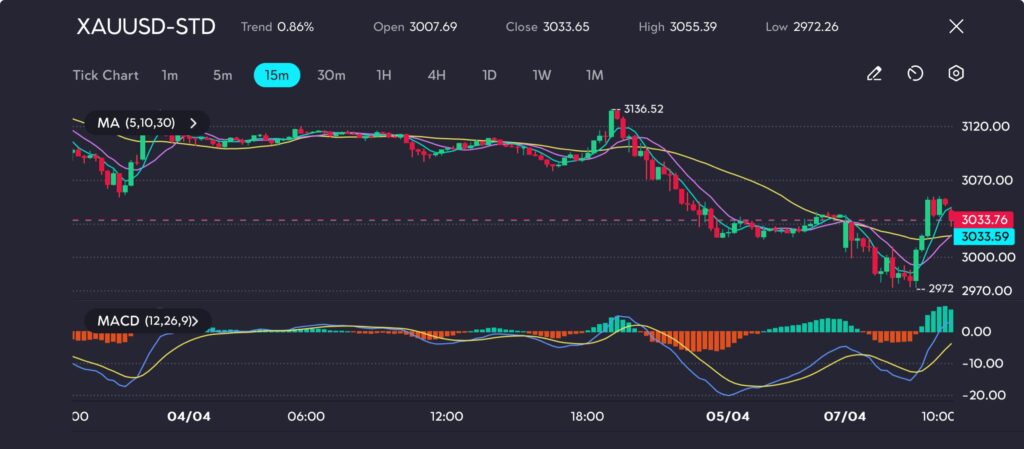
Key Points:
- Gold prices recover to $3,033 per ounce after an early decline.
- The high for the day reached $3,055.39, while the low was $2,972.26.
- The initial drop sparked trader concerns over a global recession due to trade tensions.
- Federal Reserve Chairman Jerome Powell warned of higher inflation and slower growth due to tariffs.
Gold Prices Bounce Back to $3,033
Gold prices experienced a sharp rebound on Monday, climbing to $3,033 per ounce after earlier falling to the lowest levels in more than three weeks. The drop triggered concerns that market participants were liquidating positions to cover losses or margin calls from other asset declines, driven by fears of a global recession from escalating trade tensions.
Technical Analysis

Picture: XAUUSD rises to $3033.65, testing resistance near $3055 after recent gains, as seen on the VT Markets app.
XAUUSD increased by 0.86%, closing at $3033.65 after opening at $3007.69. The session saw a rise, reaching a high of $3055.39 before retracing slightly to close near $3033.65.
The moving averages (MA 5,10,30) show bullish momentum, with the short-term moving averages crossing above the longer-term ones. This crossover suggests potential continuation of the upward trend. The MACD (12,26,9) confirms this momentum, with the histogram turning positive, indicating a shift toward bullish strength.
Key levels to monitor include $3033.59 as immediate support and $3136.52 as resistance. A move above resistance may signal further upside potential, while a dip below support could lead to downward pressure.
Trader Sentiment Worsens Amid Trade War
The ongoing global trade tensions have caused a sense of unease among market participants, prompting sharp declines in equities and other assets. Traders are increasingly concerned about the potential for a global recession, which has sent gold prices into a volatile state. Despite the early selloff, gold rebounded as traders turned to the precious metal as a safe haven.
The tariffs being imposed could lead to higher inflation while stalling economic growth, raising the stakes for policymakers, as they navigate the economic impacts of the global trade war.
The Bullion’s Outlook
The outlook for gold remains highly dependent on the evolving geopolitical landscape and potential monetary policy responses. Should global economic growth slow as a result of ongoing tariffs, gold may continue to benefit as investors seek refuge in safe-haven assets.
However, any signs of de-escalation in the trade war or a shift in central bank policy could influence market sentiment and lead to price fluctuations.









